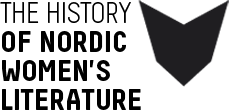Tales from the Outskirts of Society
Tag: Novels
A Literary Debate on Motherhood
The Women Writer’s Group in Ostrobothnia
In the 1960s, the strong Icelandic ‘rímur’ (rhymes or ballads) tradition made way for a ‘free form’ modern poetry, which itself was part of an international revolution within poetic language. At the age of nineteen, Steinunn Sigurðardóttir appeared at the crossroads between modernism and the 1970s confrontation with modernism’s inaccessibility.Her authorship has received a lot of attention, and is characterised by a unique lightness and linguistic playfulness. The combination of isolation with a many-sided self, a theme that occasionally emerges in her poems and prose works, is the result of a reflection on time, its nature, and its transitoriness. In this way, a search for time goes hand in hand with a search for the self. Today, Steinunn Sigurðardóttir is a beacon of Icelandic literature. Her thematic concerns have been picked up by other Icelandic writers, including Vigdís Grímsdóttir and Álfrún Gunnlaugsdóttir.
With her debut collection, Indeni – udenfor (1967; Within – Without), Danish writer Kirsten Thorup succeeded in placing herself from the outset at the centre of the literary arena. Here and in her subsequent collections she explored the positions of alienation, powerlessness, and objectification in a markedly personal voice. With her remarkable novel Baby (1973) it became clear that Kirsten Thorup had something more to say. This novel was a stylised and compact prelude to a comprehensive body of contemporary literature that has made her one of the most widely read authors in Denmark.Kirsten Thorup presents us with an unmerciful and paradoxically loving portrait of the apocalyptic images that constitute contemporary culture.
Three female Finland-Swedish authors who are generally included among the second wave of modernists began writing in Helsinki during the 1930s: Solveig von Schoultz, Mirjam Tuominen, and Eva Wichman. The war sliced through their lives and rewrote the terms of their careers.They explored new means of describing their experience, renewed the short story genre, and modified modernist poetry in various ways. Schoultz turned the spotlight on what she later called “society’s smallest cell, interpersonal relationships”, while Tuominen illumined the fundamental ethical issues of the age with the passion of Cassandra, and Wichman – whom the war radicalised – wrote political battle songs.
The focus of women’s works shifted from the sexual aspects of motherhood in the 1930s to children as the targets of wanton violence during the war. The time had come, they thought, to manifest the responsibility for society that Fredrika Bremer and Ellen Key had posited as women’s contribution to civilisation. The focus had shifted, however, from pleading the cause of women to that of children.The focus on children and the social responsibility of mothers was the last attempt by modern women writers to launch a new ethic of human relations and envisage a political utopia of peace. The broad-based, multi-genre effort did not dissipate until the 1960s when motherhood was stripped of its revolutionary content and redefined as either autocratic or powerless. Female characters assumed the position of helpless children in relation to men, and militant mothers were relegated to the status of frustrated housewives.
Stina Aronson, who published seventeen books, is best known for her depictions of life in the ‘wasteland’ of Norrbotten province. She acquired a wide readership with her novel Hitom himlen (1946; This Side of Heaven) after many years of a distinguished writing career. Among the innovative features of Aronson’s tales from northern Sweden is the paucity of plot in the generally accepted sense of the word. Discovery of the world, its serenity and sudden horror, is the primary event.The greatest inner tension in Aronson’s later works is between the modernist description of the world and a moral or ethical attitude towards it. Aronson’s stories of northern Sweden offer the gift of resonance that transforms alien silence into familiar intimacy, which somehow remains fundamentally unknown and unknowable.
During the 1920s, Finnish Katri Vala was the central figure of a literary group called the Torchbearers, which represented the first generation of authors after Finland obtained its independence. Their goal was to overturn existing literary conventions.She made her debut with Kaukainen puutarha (1924; The Faraway Garden). The most innovative feature of Vala’s poetry is its visual lucidity. Another characteristic is its free verse, which took hold in Finland partly due to her. Her imagery reflects the use of primitive and exotic elements by early twentieth century modernists. In primitive cultures they found the original life force that art needed for renewal, and they countered the prevailing culture with exoticism.Spending time in prison was a crucial event in the life of Elvi Sinervo (1912-1986), who started off with a book of short stories entitled Runo Söörnäisistä (1937; A Poem from Sörnäs). The most important prose author in the left-wing Kiila (Wedge) group, she was sentenced in 1941 to four years at a house of correction for participating in illegal political activities. The themes of the book place it squarely in the anti-Fascist literary tradition.
Anna Bondestam took up literature after a Nordic novel competition in 1936 in which her debut novel, Panik i Rölleby (1936; Panic in Rölleby), was the runner-up. Klyftan (1946; The Chasm), Bondestam’s autobiographical novel, reaches into the most intimate corner of her life: her childhood experiences of the Finnish Civil War in Jakobstad in 1918.As an account of the civil war, Klyftan is a harbinger of the more open approach that emerged in the 1960s and 1970s. Read as a trilogy, Vägen till staden, Stadens bröd, and Klyftan are not only a journey through changing Finnish society, but an uncelebrated slice of women’s history: the lives and political education of factory workers.

